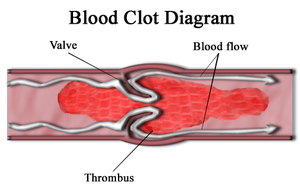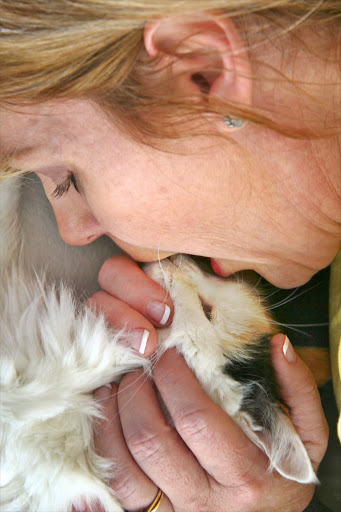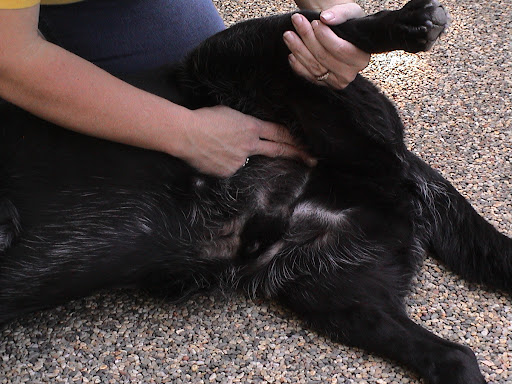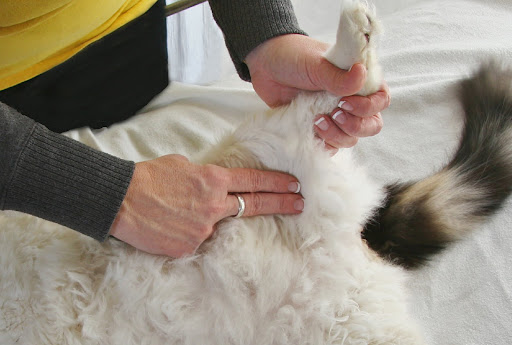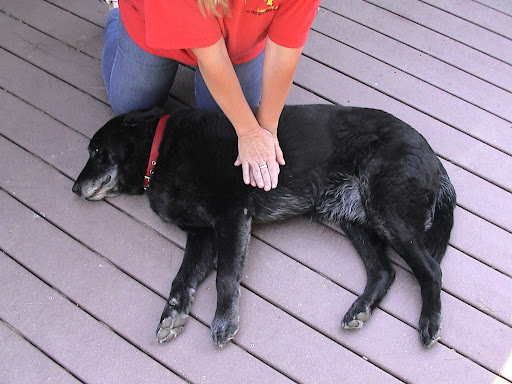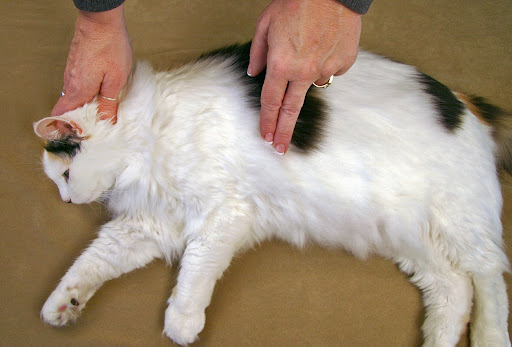When it comes to chemistry, it is always about confusion. LOL just kidding :)
***************************************************
Acid base balance
Acid-base balance is critical for maintaining the narrow pH range that is required for various enzyme systems to function optimally in the body.4 Normal blood pH ranges from 7.3-7.4.3 Decreased pH is termed acidemia and is caused by an increase in the concentration of hydrogen ions ([H+]). Increased blood pH is termed alkalemia and is caused by a decrease in the [H+].
The buffer systems that maintain this pH balance are bicarbonate, phosphates, and proteins. Bicarbonate is the most important extracellular buffer (blood), while phosphates and proteins contribute mostly to intracellular acid-base balance.The bicarbonate system is the only buffer measured for the calculation of acid-base status in patients and is represented by the equilibrium equation:
CO2 + H2O <—> H2CO3 <—> H+ + HCO3-
This equation allows one to visualize what effects the addition of carbon dioxide (CO2) or bicarbonate (HCO3-) will have on the buffer system and the blood pH. Addition of CO2 to the system will cause the equation to shift to the right, increasing the [H+] and, therefore, lowering the pH. Addition of HCO3- to the system will cause the equation to shift to the left, lowering the [H+] and increasing the pH.
Another way to conceptualize this information is to simply think of CO2 as an acid and HCO3- as a base. If CO2 is increased it will tend to cause acidemia. If HCO3- is increased, then alkalemia is the expected result.
In addition to buffers, the lungs and kidneys play a major role in acid-base homeostasis.The lungs function in ventilation and they are responsible for regulating the amount of CO2 present in plasma. The kidneys are responsible for controlling the amount of HCO3- in the blood by resorbing or excreting it in the proximal tubule.Abnormalities in acid-base status are classified as to whether the primary abnormality lies with the CO2 concentration or the HCO3-concentration ([HCO3-]). If CO2 is primarily affected, then a respiratory disturbance is present. If HCO3- is primarily affected, then a metabolic disturbance is present.
Acid base disorder
Simple acid-base disorders are those that are confined to one primary alteration in CO2 or HCO3- with or without a compensatory response. There are four simple acid-base disorders: respiratory acidosis, metabolic acidosis, respiratory alkalosis and metabolic alkalosis.
Acidosis is a physiologic condition that tends to increase the concentration of hydrogen ions, which will decrease the pH.This condition can be respiratory or metabolic in origin. An increase in the concentration of CO2, expressed as pCO2, is known as respiratory acidosis. Alternatively, a decrease in the [HCO3-] is known as metabolic acidosis. Both of these situations cause the buffer equation to shift to the right, causing an increased [H+] and a decreased pH.
Alkalosis is a physiologic condition that tends to decrease the [H+], which will increase the pH. Like acidosis, alkalosis can be respiratory or metabolic in origin. A primary condition that results in decreased pCO2 is termed respiratory alkalosis and a primary condition that results in increased [HCO3-] is termed metabolic alkalosis. Both situations shift the bicarbonate equation to the left, resulting in a decreased [H+] and an increased pH.
Acidemia and alkalemia are alterations in the pH of the blood. Acidosis and alkalosis (respiratory or metabolic) are the disorders that will cause these pH alterations. Most cases of simple acidosis or alkalosis, such as those described above, will result in acidemia or alkalemia, respectively.
However, there are compensatory mechanisms that the body will employ in an attempt to maintain a normal pH. In these situations it is possible to have an acidosis or alkalosis disorder and maintain a normal blood pH. There are also mixed acid-base disorders in which opposing primary disorders can effectively cancel each other out and produce a normal pH balance.
Let's a look at one by one
Repiratory Acidosis
Respiratory acidosis is caused by any condition which increases the pCO2 (hypercapnia).While increased production of CO2 (hyperthermia, cardiopulmonary arrest) is a possible cause of hypercapnia, the vast majority of cases are due to impaired removal of CO2 through the lungs. Hypoventilation, ventilation-perfusion mismatch and impaired alveolar gas exchange can all lead to hypercapnia. Therefore, the broad categories of disease which can lead to respiratory acidosis include:
- respiratory center depression
- neuromuscular disease
- restrictive extrapulmonary disease
- intrinsic pulmonary
- small airway disease
- large airway obstruction,
- increased CO2 production with impaired alveolar ventilation.
Respiratory alkalosis
Respiratory alkalosis is caused by conditions that will decrease the pCO2 (hypocapnia). Hyperventilation will lead to hypocapnia, and it can be caused by hypoxemia, pulmonary disease, direct activation of the respiratory center in the brainstem, overzealous mechanical ventilation, or situations causing pain, fear, or anxiety.
Metabolic acidosis
May result from either an excess of acid or reduced buffering capacity due to a low concentration of bicarbonate. Excess acid may occur due increased production of organic acids or, more rarely, ingestion of acidic compounds.
There are two types of metabolic acidosis. Both are characterized by a decrease in the [HCO3-] but they differ in how that decrease occurs. Secretional metabolic acidosis is caused by a direct loss of bicarbonate-rich fluid such as diarrhea or saliva. Titrational metabolic acidosis is caused by the presence of non-CO2 acids that titrate bicarbonate causing a decreased [HCO3-].
Titration-type metabolic acidosis is the result of increased endogenous or exogenous acids in the plasma. Exogenous acids include ethylene glycol metabolites and salicylate. Endogenous acids include lactic acid, uremic acids, and ketones. It follows then that shock, renal failure, and diabetic ketoacidosis, respectively are common causes of titration-type metabolic acidosis. In cases of hypovolemic shock, perfusion is decreased. Anaerobic metabolism is a consequence of decreased perfusion, so lactic acid accumulates.
In cases of renal failure, uremic acids will accumulate since the kidneys can not effectively excrete them. In cases of undiagnosed or uncontrolled diabetes mellitus, cells cannot utilize glucose due to a lack of insulin. Therefore, the body must metabolize its adipose tissue. Ketones are the byproduct of oxidation of free fatty acids by the liver.
Anion gap
Secretional and titrational metabolic acidosis can be differentiated by their effects on the anion gap (AG). The anion gap is a calculated value based on the principle of electroneutrality which states that the total anions in the body must always be equal to the total cations. We regularly measure the most significant ions: Na+, K+, Cl- and HCO3-. The ions we do not regularly measure are referred to as unmeasured ions.
There are unmeasured cations (Ca+2, Mg+2, and gammaglobulins) and unmeasured anions (albumin, phosphates, sulfates, and organic acids). The unmeasured anions outnumber the unmeasured cations and the difference is the anion gap (Figure 1). The anion gap is easily calculated from the ions we do measure: AG = (Na+ + K+) – (Cl- + HCO3-).4 Unmeasured cations do not undergo significant changes in health or disease and so changes in the anion gap are almost always associated with changes in the unmeasured anions.
Figure 1: Normal anion gap
With secretion-type metabolic acidosis, the anion gap is normal. The body compensates for the increased loss of bicarbonate by a retaining Cl-. As such, as the [HCO3-] decreases, the [Cl-] increases and the anion gap remains normal (Figure 2).
Figure 2: Normal anion gap in secretion acidosis
With titrational metabolic acidosis, the anion gap is increased. Remember that titration type metabolic acidosis is associated with increased levels of exogenous or endogenous acids. Since HCO3- is consumed to buffer these organic acids and there is no effect on the [Cl-], the anion gap increases (Figure 3). The anion gap is therefore very useful in determining a possible etiology for metabolic acidosis that can be confirmed based on history and clinical signs.
Figure 3: Increased anion gap in titration acidosis
Metabolic alkalosis
Causes of metabolic alkalosis include loss of acidic chloride-rich fluids from the body and chronic administration of alkali. In small animal practice, most cases of metabolic alkalosis are caused by vomiting of stomach contents. Abomasal reflux of hydrochloric acid (HCl) into the rumen will cause metabolic alkalosis in ruminants.
Compensation
Compensation is the process whereby the body attempts to restore the normal blood pH during an acid-base disorder. Overcompensation does not occur. As with the primary disorders, compensation can be metabolic or respiratory in origin.
| Acid-Base Disturbance | Primary Disturbance | Compensatory Response | Compensatory Mechanism |
| Respiratory acidosis | Increased pCO2 | Increase [HCO3-] | Acidic urine |
| Respiratory alkalosis | Decreased pCO2 | Decreased [HCO3-] | Alkaline urine |
| Metabolic acidosis | Decreased [HCO3-] | Decrease pCO2 | Hyperventilation |
| Metabolic alkalosis | Increased [HCO3-] | Increased pCO2 | Hypoventilation |
Compensatory process
Keyword: Respiratory--> compensate at kidney
Metabolic --> compensate at lungs
Diagnosis of acid base disorder
The values that need to be examined to determine if there is an acid-base imbalance are: blood pH, pCO2, [HCO3-], and the anion gap. If any of these values are outside of the reference range, an acid-base abnormality is present. The blood gas analysis reports pH, pCO2, [HCO3-], and pO2. Blood gas analysis is completed on whole blood collected in heparin (green tube), and the sample should be collected anaerobically and processed as soon as possible after collection. The serum chemistry profile reports the anion gap and total CO2 (TCO2). TCO2, not to be confused with pCO2, is another measurement of [HCO3-] and is often used synonomously.
Most simple acid-base disorders are associated with a change in pH. Once acidemia or alkalemia is detected, the next step is to determine if the primary cause is respiratory or metabolic in nature. This requires analysis of the pCO2 and HCO3- (TCO2) values. Changes in the HCO3- value that correspond to the change in pH reflect a primary metabolic disorder while changes in the pCO2 that correspond to the change in pH reflect a primary respiratory disorder. The next step is to determine if there is secondary compensation by the body to try to correct the primary disturbance.
Mixed acid base disorder
A mixed acid-base disorder is one in which two different primary conditions are acting at the same time. Mixed disorders can be a combination of metabolic and respiratory disorders or a combination of different metabolic disorders. The separate processes may have either a neutralizing or additive effect on the pH.
First, there are mixed disorders which have a neutralizing effect on pH. In these cases, the body may appear to be overcompensating because the pH is normal or close to normal. Since the body does not overcompensate, a mixed disorder should be suspected. A classic example of this type of disorder is a vomiting dog who becomes dehydrated. The loss of stomach acid leads to alkalosis while the dehydration and subsequent lactic acid buildup leads to acidosis.
Second, it is possible to have mixed disorders which have an additive effect on pH.2 For example, a respiratory acidosis and metabolic acidosis can occur concurrently in a dog with thoracic trauma that also has lactic acidosis due to shock. In this case the pH would be dangerously low. Mixed disorders that have an additive effective on the pH will always have an abnormal pH.
Effects of acid base disorder
Many of the clinical signs observed in animals with acid-base disturbances are the result of the primary disease process but there are also clinical signs that can develop as a result of the acid-base disturbance itself. Most notably, changes in neural function, cardiac output and concentrations of calcium and potassium may all occur as a direct result of acid-base abnormalities.
Severe acidosis will impair the ability of the brain to regulate its volume, resulting in obtundation and coma. Severe metabolic alkalosis can induce agitation, disorientation, stupor and coma. Cardiac output is also compromised by severe acidosis. Myocardial contractility decreases when the blood pH falls below 7.2 and acidosis may predispose the heart to ventricular arrythmias or ventricular fibrillation.
Serum ionized calcium concentration can be affected by acid-base abnormalities. Acidosis causes displacement of calcium ions from their binding sites on albumin as the binding sites become protonated and an increase in ionized calcium concentration results. Conversely, alkalosis will cause a decrease in ionized calcium concentration and may lead to muscle twitching.
The distribution of potassium ions between the intracellular and the extracellular fluids (and therefore the blood [K+]) may be affected by acid-base disorders as well. As the blood [H+] rises in cases of acidosis, more H+ ions are pumped intracellularly in exchange for K+ ions that are pumped extracellularly (Figure 4). This exchange of ions is necessary to maintain electrical neutrality. The result is a rise in serum [K+]. This situation has only been observed in cases of titration-type metabolic acidosis caused by non-organic (mineral) acids like hydrochloric acid and secretion-type metabolic acidosis.Even though hyperkalemia can develop, it is not likely to occur if renal function and urine output are normal. Clinical signs of hyperkalemia can include muscle weakness and cardiac conduction disturbances.
Figure 4: Exchange oh H+ and K+ in acidosis. Result in hyperkalemia
Just as hyperkalemia can accompany acidosis, hypokalemia can accompany alkalosis.Hydrogen ions moves out of the cell to increase the [H+] extracellularly, so potassium ions move inside the cell to maintain electrical neutrality (Figure 5). Clinical signs of hypokalemia can include muscle weakness, polyuria, polydipsia, impaired urinary concentrating ability, and cardiac arrhythmias.
Figure 5: Exchange of H+ and K+ in alkalosis. May cause hypokalemia
Treatment of acid base disorder
Treatment of respiratory acidosis and respiratory alkalosis is aimed at correcting hypercapnia and hypocapnia, respectively. Therefore, causes of hypoventilation and hyperventilation need to be investigated in order to determine the underlying cause of hypercapnia and hypocapnia, respectively.
Treatment of metabolic alkalosis is aimed at replacing the chloride deficit in cases where vomiting of stomach contents or diuretic administration is the underlying cause.However, potassium and sodium deficits are likely to be present also, so these must be addressed simultaneously. Therefore, the treatment of choice for the correction of metabolic alkalosis in dogs and cats is intravenous administration of a sodium chloride (NaCl) solution with added potassium chloride (KCl). If ongoing gastric losses are present, H2-blocking agents can be useful to decrease gastric acid secretion. In cases where a gastric foreign body is causing vomiting, definitive treatment consists of surgical removal of the foreign body.
Treatment of metabolic acidosis is dependent upon the underlying etiology. Fluid therapy to correct dehydration and electrolyte disturbances, if present, is warranted. However, specific treatments will vary for ethylene glycol intoxication, lactic acidosis, renal failure, and diabetic ketoacidosis.
Ps: Hope this won't be confused no more
Sources: Full article of Acid-Base Balance, an overview; Veterinary Clinical Pathology Clerkship Program






















